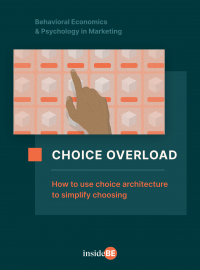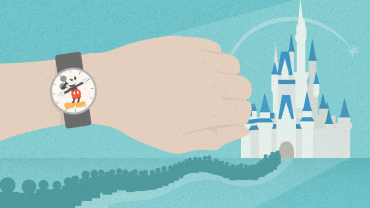The 4 Biggest Mistakes You Can Make in Sales According to Experts

If you think the objective value and benefits of your product are the most important features in sales, then you’ve got it all wrong. We asked four behavioral experts to share the biggest mistakes companies make so that you can avoid them.
In this article, you’ll discover:
- The four biggest mistakes you can make in sales according to behavioral experts;
- What aspect is even more important than having a killer deal;
- How a seemingly irrational solution increased restaurants’ average spend per head beyond their expectations; and
- Why leading a sales conversation with just the benefits is prone to backfire.
If you’re reading this now, chances are you’re looking for some ways to improve your sales. Well, you’ve certainly come to the right place. But, perhaps, it’s not about what you should START doing, but rather what you should STOP doing.
We asked four world-leading experts in behavioral economics what the biggest mistakes they see companies make in sales are and what to do about them.

Discover ground-breaking ideas and fascinating solutions.
And since we’re not the greatest fans of chitter chatter, let’s cut straight to the chase. Here they are:
1. Relying too much on objective value
It’s only rational to assume that better deals equate to the increased likelihood that your customer will buy whatever it is you’re selling. I mean, that would make sense, right?
Well, the reality couldn’t be further from the truth. For our InsideBE first-timers (welcome!), your customers aren’t fully rational creatures. Nobody is. We’re driven by subconscious shortcuts and biases, and so the subjective is what really matters to us.
That’s the first piece of advice from this article provided by Lea Karam, Strategy Consultant and Behavioral Scientist at behave.
Consumers won’t always settle for ‘better prices’ but rather a better experience and perceived fairness.
“Consumers won’t always settle for ‘better prices’ but rather a better experience and perceived fairness. For instance, long lines, untrained staff, rude customer service, or a website that isn’t user-friendly all affect consumer satisfaction, regardless of the financial value saved,” says Lea.
The time wasted, mental effort, physical effort… it all matters. And it can dramatically influence your CX, which is the main driver of customer loyalty. One of the most important things you should do is to lower the perceived effort and objective obstacles to optimize your CX. It will lead to satisfied and loyal customers.
So don’t focus on just the objective value. Also consider the whole experience your customer goes through.
Now, let’s get a bit more specific.
2. Overwhelming customers with benefits and information
Other words of wisdom come from Matej Sucha, CEO of MINDWORX Behavioral Consulting. “Salespeople often think that the more benefits they mention the higher the chance a prospective customer will buy what they’re selling. This isn’t exactly true. By providing too much information, the customer might actually feel overwhelmed and quit the purchase process altogether.”
By providing too much information, the customer might actually feel overwhelmed and quit the purchase process altogether.
Our brains are programmed that way: to pick the easiest route in order to save ourselves time and energy. And processing information: that’s a heavy task. So when it’s simply too much for customers to handle, they won’t buy.
On the other hand, cutting down the long lists or never-ending paragraphs can make the whole process easier.
Choice Overload
Choice overload is a result of too many choices being available. It can result in decision fatigue, sticking to the default option, or even avoiding making a decision altogether.
It might be counterintuitive: rational thinking tells us “the more options the better.” But once it’s easier for customers to process a flood of information, the more likely they are to buy.
For example, one thing Cowry Consulting opted to do when approached by a restaurant to increase the average spend per head by 4 pence was cutting down the choices on the menu. By combining this technique with other behavioral principles, they managed to increase the spend per head not by 4 pence, but 13!
Sometimes less is more, especially when it comes to consumers’ decision-making. The easier it is for a customer to process loads of information, the better.
3. Asking questions that aren’t relevant yet
Melina Palmer, founder, and CEO of The Brainy Business, agrees with Matej’s point and specifies the user case even more. According to her, companies often make the product about them, not about the user. This results in a lot of extra questions that aren’t relevant at the moment, like asking for physical addresses or other demographics.
I always encourage clients to think about what’s the LEAST amount of information they can ask at any moment in order to move forward.
That ends with customers feeling either overwhelmed, annoyed, or both, so they abandon the purchasing process entirely. “I always encourage clients to think about what’s the LEAST amount of information they can ask at any moment in order to move forward. What’s the least amount you can share to get someone to be ready to buy?” states Melina.
These questions can wait, the priority is to get the customer through the process. “This isn’t the only moment,” Melina continues. “Make it streamlined and simple and save those other things for when they’re actually relevant. Get through the buying process first!”
For instance, imagine you could win $50,000. All you have to do is to fill out an application to be included in the draw. Would you fill it out?
No one in the right mind would think that someone would ditch it. Yet, one of the top 10 midwestern state universities with a contest just like this noticed a steady decline in the number of completed application forms over the years.
However, reducing the number of fields by 40% and making it clear what fields were required and what ones were optional sped up the application process to just 5 minutes: a 75% reduction! This significantly eased the whole application process.
4. Concealing the downsides of the product
“Sometimes recognizing the downside of a product or service can be a compelling way to reinforce the upside,” admits Sam Tatam, head of behavioral science at Ogilvy.
Being dishonest might seem compelling at times. After all, that’s the main theme of Dan Ariely’s famous book, The Honest Truth About Dishonesty. But being shady about the limitations of your product can end up backfiring.
“Although it can be very tempting to lead a sales conversation with the benefits or what people stand to gain, by neglecting to tell people what’s wrong with your product, you risk leaving people to determine this for themselves,” sums up Sam.
It can be very tempting to lead a sales conversation with the benefits or what people stand to gain, by neglecting to tell people what's wrong with your product, you risk leaving people to determine this for themselves.
In other words, it’s much worse when customers find out the shortcomings by themselves, as this drives distrust. However, being open and honest about the downsides can make you look more authentic and build trust between you and the customer.
Buckley’s syrups are a good example of how being honest about the brand’s weakness can do you good. If you’ve ever had one of their syrups before, you’d know that it tastes like… well… let’s just say it doesn’t taste very good. They’re aware of this too and decided to embrace it:

And it’s no surprise customers like brands that can be trusted. For example, in a 2016 Food Revolution Study, 94% of customers said that brand transparency is an important factor and impacts their purchase decisions.
So, it seems like we can’t do much about it. So I guess our moms were right in raising us to always tell the truth.
Key Takeaways:
- Objective value won’t matter with terrible customer experience. Even with a great product, details like long waiting, rude customer service, or a poorly designed website affect consumer satisfaction and loyalty.
- Too much information will overwhelm customers. If you try to impress customers with too many benefits, it becomes more difficult to process it. Once the customers experience information overload, they’ll likely opt to quit the process than buy.
- Don’t ask customers too many questions right at the beginning. They’re not relevant yet. Asking for physical addresses or other demographics can wait until the customer’s ready to buy.
- Don’t hide the downsides of your product. Being honest, even about shortcomings, can help you build trust between you and your customers. It’s also much better than letting the customers find out what the downsides are themselves.




